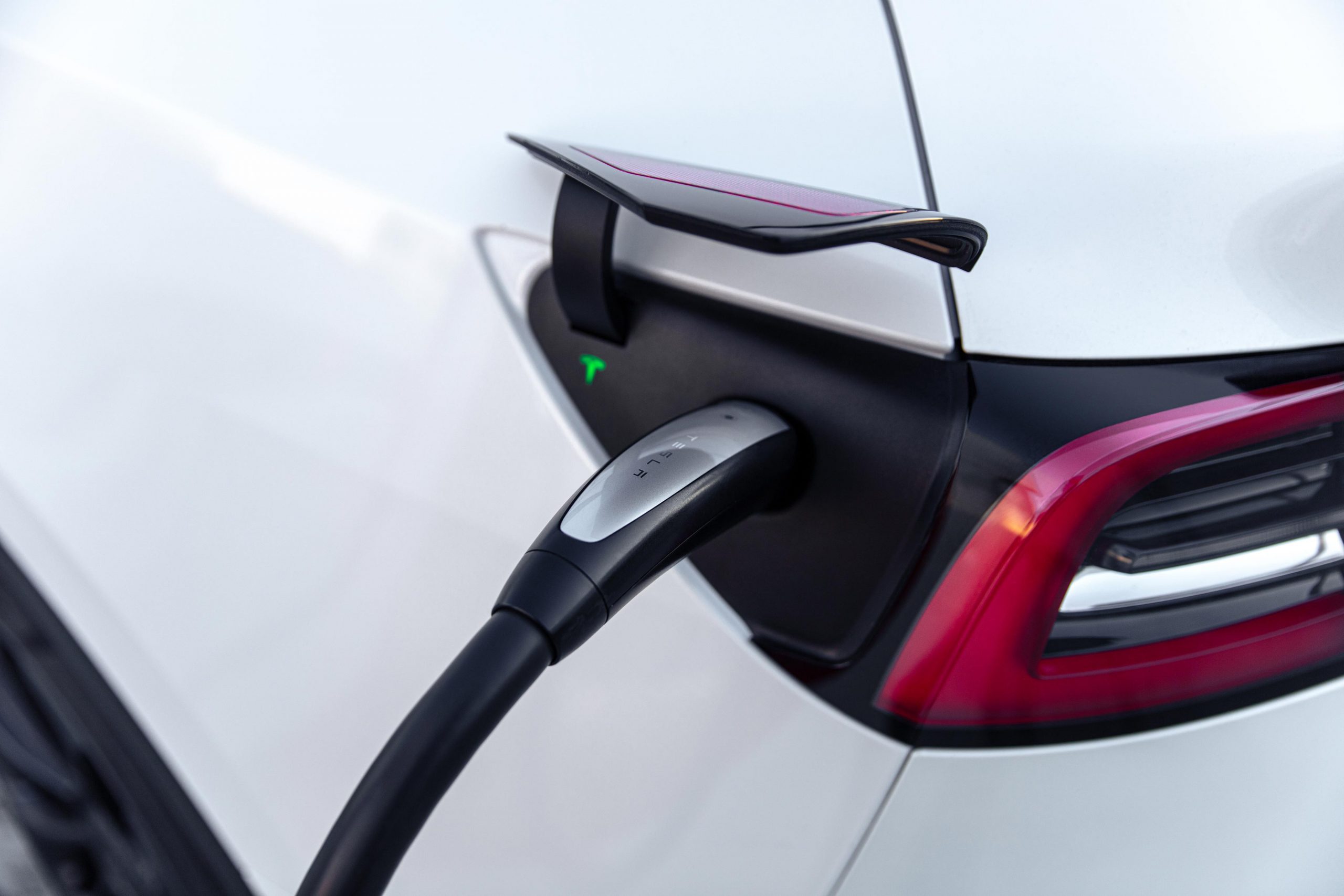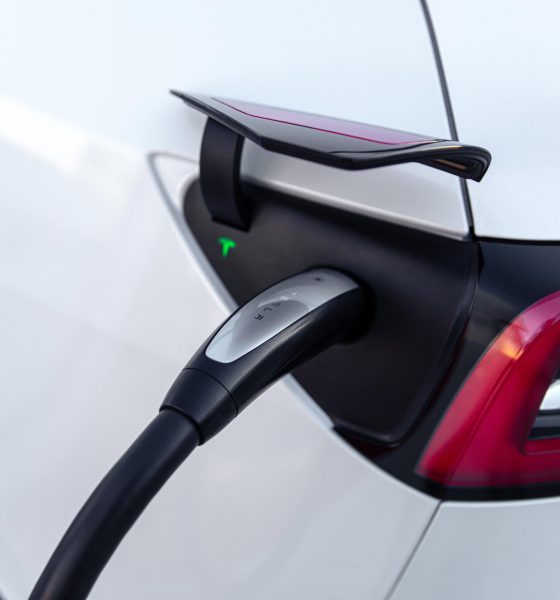

News
Tesla denied grant applications in Texas for Superchargers despite fractional costs
Tesla recently applied for a series of grants through a program in the State of Texas that would cover up to 70 percent of an electric vehicle charging stall installation. However, the applications from the United States’ leading electric automaker were denied, despite costs being a fraction of what competitor installations would cost. According to a report from Forbes, which examined the rejected applications and what would instead be installed, Texas is doing itself a disservice, selecting “the most expensive stations in the worst locations for their money.”
Despite a laid out sheet of ground rules, which tend to gravitate toward impartial and unbiased selections, it does not always work out that way. The $21 million in grants, which are awarded on a first-come-first-serve basis, provided enough funding for 170 chargers at 41 stations. Tesla’s applications were not selected for a single project, despite aligning with the grant’s requirements, which would have made Tesla install CHAdeMO or CCS connectors, which would open the Superchargers up to other car manufacturers.
Interestingly, the article states that around 70 percent of EVs on the road would benefit from even more Tesla Superchargers. The robust network of global charging stations for Tesla, which recently eclipsed 30,000 worldwide, provides energy for the industry’s best EVs. Sales figures for Tesla are simply incomparable to other EV companies, as it is the only company in the United States to consistently mark hundreds of thousands of deliveries per quarter, with each one being an electric powertrain.
Tesla’s Superchargers would not have only benefitted drivers of the all-electric automaker’s products. The Forbes report indicates Tesla had only applied for a “small portion” of the money to build its first four stations, which would also accept non-Tesla EVs, much like a “pilot” program the company has started to test in Europe.
Tesla’s non-Tesla Supercharger pilot program expands to France, Norway
While it has not yet happened in the United States, Tesla Superchargers could be used to provide energy to other EV manufacturer products. Tesla stands to gain in other ways, too, as the company allowing other cars to access its infrastructure would help relieve range anxiety concerns. However, its biggest advantage is having 70 percent of the station covered by grant money.
Even if Tesla planned to use the grant funds to expand its charging infrastructure, the decision not to accept their applications is questionable. The prices in unaccepted grant applications, representing up to 70 percent of the actual cost, are as follows:
- Chargepoint: $150K+ for 2-plex
- EVgo: $150K+ for pair, $126K for 4-plex
- Circle-K: $75K for 4-plex to $150K+ for 2-plex
- 7-11: $126K for 2-plex
- “Retail EV Charging North/South Texas” (Buc-ee’s) $100K/charger for 6-plex
- Various small players: $75K to $150K, averaging at least $133K/charger
- Accepted applications so far from various players average $123K+/charger
- Tesla: $29K for 17-plex, $42K for 9-plex
Opening up potential Supercharger locations to other automakers would be extremely advantageous from a cost perspective. It also would give Tesla the ability to test the waters of a potential pilot program in the United States, with plenty of restrictions that would still give Tesla owners prioritization at the stalls.
Ultimately, the EV infrastructure doesn’t seem to gain any benefits from what the Forbes article’s author, Brad Templeton, calls “misguided grants.” Instead, funding the EV infrastructure with what drivers actually need, which is more stations in advantageous areas, like shopping centers or tourist destinations, is the answer.
I’d love to hear from you! If you have any comments, concerns, or questions, please email me at joey@teslarati.com. You can also reach me on Twitter @KlenderJoey, or if you have news tips, you can email us at tips@teslarati.com.

News
Tesla FSD fleet is nearing 7 billion total miles, including 2.5 billion city miles
As can be seen on Tesla’s official FSD webpage, vehicles equipped with the system have now navigated over 6.99 billion miles.

Tesla’s Full Self-Driving (Supervised) fleet is closing in on almost 7 billion total miles driven, as per data posted by the company on its official FSD webpage.
These figures hint at the massive scale of data fueling Tesla’s rapid FSD improvements, which have been quite notable as of late.
FSD mileage milestones
As can be seen on Tesla’s official FSD webpage, vehicles equipped with the system have now navigated over 6.99 billion miles. Tesla owner and avid FSD tester Whole Mars Catalog also shared a screenshot indicating that from the nearly 7 billion miles traveled by the FSD fleet, more than 2.5 billion miles were driven inside cities.
City miles are particularly valuable for complex urban scenarios like unprotected turns, pedestrian interactions, and traffic lights. This is also the difference-maker for FSD, as only complex solutions, such as Waymo’s self-driving taxis, operate similarly on inner-city streets. And even then, incidents such as the San Francisco blackouts have proven challenging for sensor-rich vehicles like Waymos.
Tesla’s data edge
Tesla has a number of advantages in the autonomous vehicle sector, one of which is the size of its fleet and the number of vehicles training FSD on real-world roads. Tesla’s nearly 7 billion FSD miles then allow the company to roll out updates that make its vehicles behave like they are being driven by experienced drivers, even if they are operating on their own.
So notable are Tesla’s improvements to FSD that NVIDIA Director of Robotics Jim Fan, after experiencing FSD v14, noted that the system is the first AI that passes what he described as a “Physical Turing Test.”
“Despite knowing exactly how robot learning works, I still find it magical watching the steering wheel turn by itself. First it feels surreal, next it becomes routine. Then, like the smartphone, taking it away actively hurts. This is how humanity gets rewired and glued to god-like technologies,” Fan wrote in a post on X.
News
Tesla starts showing how FSD will change lives in Europe
Local officials tested the system on narrow country roads and were impressed by FSD’s smooth, human-like driving, with some calling the service a game-changer for everyday life in areas that are far from urban centers.

Tesla has launched Europe’s first public shuttle service using Full Self-Driving (Supervised) in the rural Eifelkreis Bitburg-Prüm region of Germany, demonstrating how the technology can restore independence and mobility for people who struggle with limited transport options.
Local officials tested the system on narrow country roads and were impressed by FSD’s smooth, human-like driving, with some calling the service a game-changer for everyday life in areas that are far from urban centers.
Officials see real impact on rural residents
Arzfeld Mayor Johannes Kuhl and District Administrator Andreas Kruppert personally tested the Tesla shuttle service. This allowed them to see just how well FSD navigated winding lanes and rural roads confidently. Kruppert said, “Autonomous driving sounds like science fiction to many, but we simply see here that it works totally well in rural regions too.” Kuhl, for his part, also noted that FSD “feels like a very experienced driver.”
The pilot complements the area’s “Citizen Bus” program, which provides on-demand rides for elderly residents who can no longer drive themselves. Tesla Europe shared a video of a demonstration of the service, highlighting how FSD gives people their freedom back, even in places where public transport is not as prevalent.
What the Ministry for Economic Affairs and Transport says
Rhineland-Palatinate’s Minister Daniela Schmitt supported the project, praising the collaboration that made this “first of its kind in Europe” possible. As per the ministry, the rural rollout for the service shows FSD’s potential beyond major cities, and it delivers tangible benefits like grocery runs, doctor visits, and social connections for isolated residents.
“Reliable and flexible mobility is especially vital in rural areas. With the launch of a shuttle service using self-driving vehicles (FSD supervised) by Tesla in the Eifelkreis Bitburg-Prüm, an innovative pilot project is now getting underway that complements local community bus services. It is the first project of its kind in Europe.
“The result is a real gain for rural mobility: greater accessibility, more flexibility and tangible benefits for everyday life. A strong signal for innovation, cooperation and future-oriented mobility beyond urban centers,” the ministry wrote in a LinkedIn post.
News
Tesla China quietly posts Robotaxi-related job listing
Tesla China is currently seeking a Low Voltage Electrical Engineer to work on circuit board design for the company’s autonomous vehicles.

Tesla has posted a new job listing in Shanghai explicitly tied to its Robotaxi program, fueling speculation that the company is preparing to launch its dedicated autonomous ride-hailing service in China.
As noted in the listing, Tesla China is currently seeking a Low Voltage Electrical Engineer to work on circuit board design for the company’s autonomous vehicles.
Robotaxi-specific role
The listing, which was shared on social media platform X by industry watcher @tslaming, suggested that Tesla China is looking to fill the role urgently. The job listing itself specifically mentions that the person hired for the role will be working on the Low Voltage Hardware team, which would design the circuit boards that would serve as the nervous system of the Robotaxi.
Key tasks for the role, as indicated in the job listing, include collaboration with PCB layout, firmware, mechanical, program management, and validation teams, among other responsibilities. The role is based in Shanghai.
China Robotaxi launch
China represents a massive potential market for robotaxis, with its dense urban centers and supportive policies in select cities. Tesla has limited permission to roll out FSD in the country, though despite this, its vehicles have been hailed as among the best in the market when it comes to autonomous features. So far, at least, it appears that China supports Tesla’s FSD and Robotaxi rollout.
This was hinted at in November, when Tesla brought the Cybercab to the 8th China International Import Expo (CIIE) in Shanghai, marking the first time that the autonomous two-seater was brought to the Asia-Pacific region. The vehicle, despite not having a release date in China, received a significant amount of interest among the event’s attendees.








